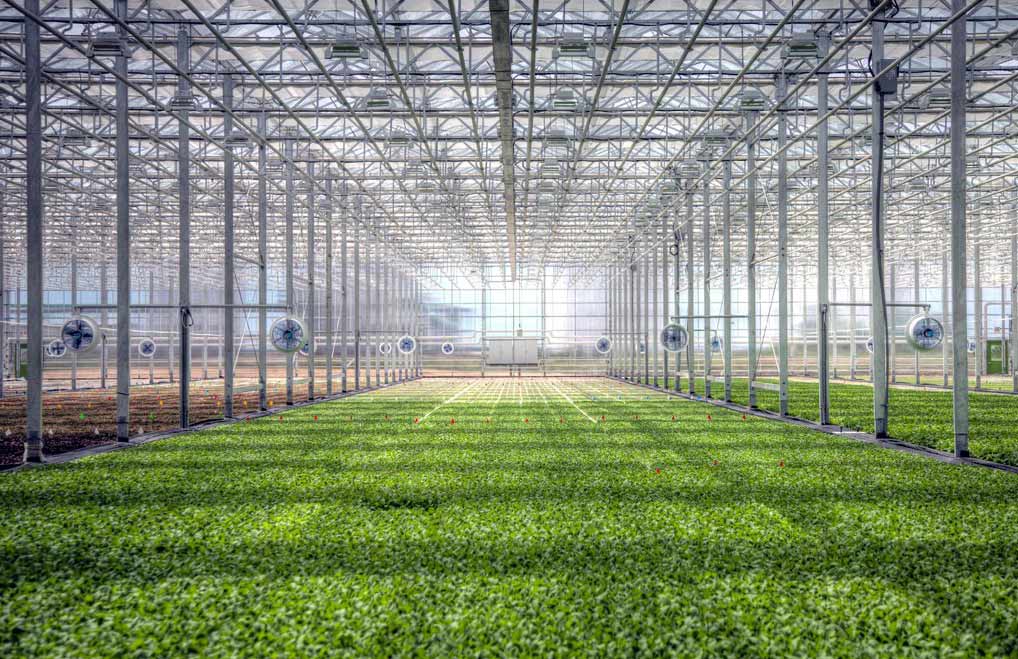
Constant, warm temperatures are a must for a successful crop of most any plant. Horticultural engineers have spent years developing greenhouse heating systems to maintain the needed temperatures within a greenhouse year-round so that plants can grow whenever they are needed. For decades, the only option to keep greenhouses at a given temperature was to use forced-air heating systems–vents of hot air blowing on the plants to keep air temperature at a certain level.
Forced air systems were an amazing innovation, but they were expensive and far from energy-efficient. The warm air patterns created by the systems also created pockets of cooler air, making the temperature lower than ideal in certain areas.
Root zone heating (RZH) was invented in order to counteract these deficiencies by using radiant heat from water-based heat sources under the plant instead of heated air. BioTherm was on the cutting-edge of these developments, creating the first commercialized root zone heating systems for commercial horticulture.
Since that time, our engineers have refined and updated our systems to be more efficient and effective than any other RZH systems on the market today. Our root zone heating systems use hydronic heat generated from warmed water running through pipes embedded in the floors or plant beds in your greenhouse. They directly heat the root zone of the plant and emit radiant heat for the rest of the greenhouse from the ground up.
Why Should I Care about RZH?
As a professional grower, you surely know the importance of the roots of the plant. The roots anchor the plant and provide all the nutrients and water that it needs to grow. These nutrient uptake processes are significantly more efficient when the root zone of the crops is heated directly. This leads to higher yields and healthier, more robust plants.
Not only do plants warmed from the root zone flower more and grow larger, but they also cost less to produce. When the root temperature of a plant is kept at the ideal, the air temperature needed to sustain peak growth is about 5 to 15 degrees Fahrenheit lower, depending on the plant and stage in the growth cycle, which requires less energy to reach. Plus, maintaining that temperature is much easier using root zone heating. RZH systems are significantly more efficient than forced-air heating systems, as they do not create inconsistent airflows or pockets of cool air that have to be overcome. Instead, heat transfer stays constant. This reduces the cost of greenhouse heating by as much as 50% in some cases.
Root zone heating is an option that can provide you with more successful crops year after year, which means you can’t afford not to consider it. If you want to know how RZH systems could improve your greenhouses and your crops, call us today for a free consultation.




